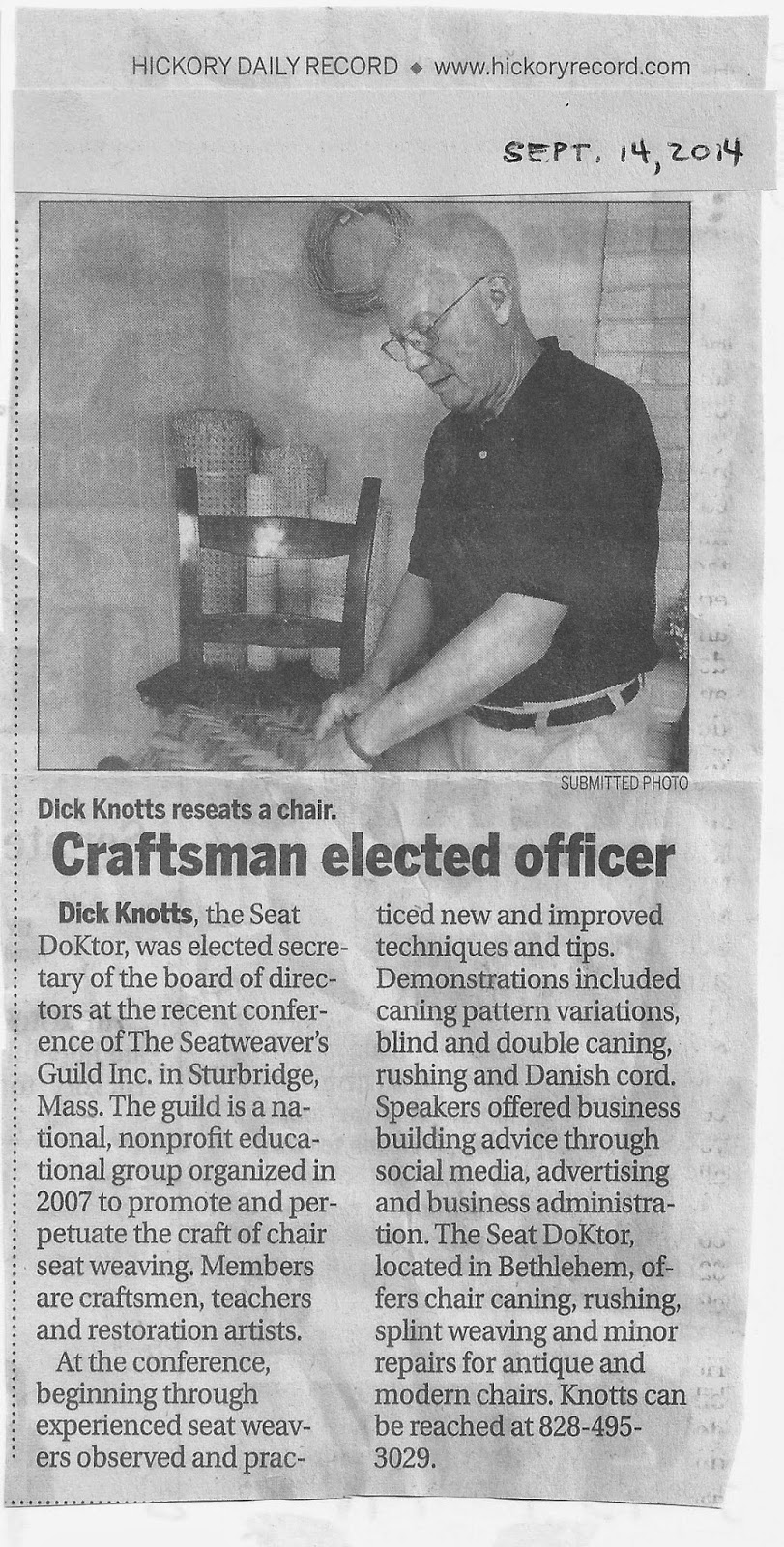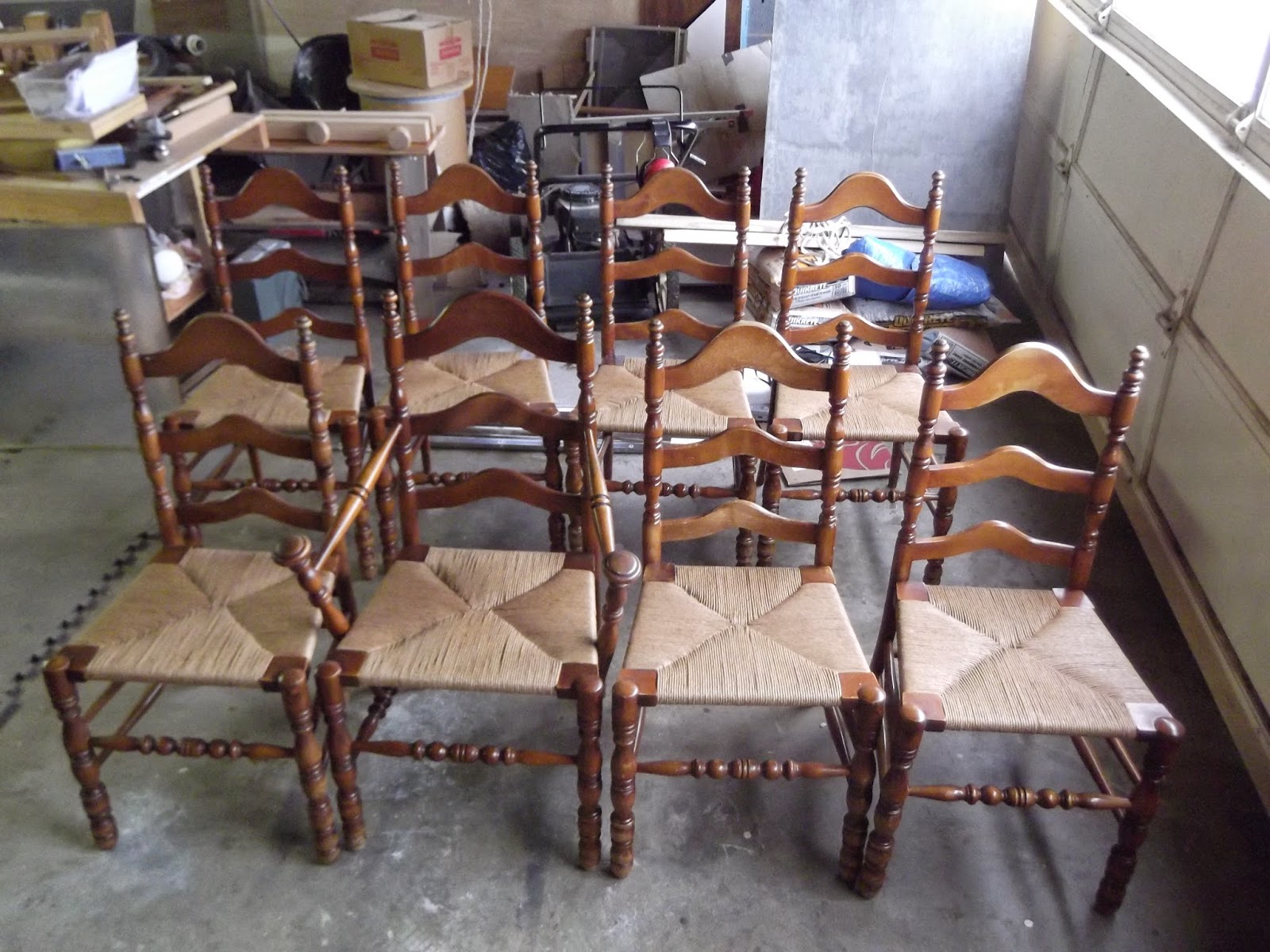The Seat DoKtor
DICK KNOTTS
Thursday, September 18, 2014
Friday, July 11, 2014
Problem Solved
1950's Silvestri ribbon pattern iron chairs designed by Mario Tempestrini.
Unable to find a material like the original, I used unlaced Danish cord to restore these to the original weave pattern. (See previous post on Material I.D) Since the old and new materials were a different diameter, a calculation had to be made for the appropriate # of strands to achieve the pattern.
Very generously, the owner offered my wife and I the opportunity to sit on the chairs and visit for a couple days
during an eastern NC vacation. Very pleasant way to enjoy your work, I might say.
They are very comfortable.
Unable to find a material like the original, I used unlaced Danish cord to restore these to the original weave pattern. (See previous post on Material I.D) Since the old and new materials were a different diameter, a calculation had to be made for the appropriate # of strands to achieve the pattern.
Very generously, the owner offered my wife and I the opportunity to sit on the chairs and visit for a couple days
during an eastern NC vacation. Very pleasant way to enjoy your work, I might say.
They are very comfortable.
Sunday, April 13, 2014
Material I.D.
Needing some help on material identification.
2-ply, each twisted. Full diameter=.1"
Tempestrini chairs from 50's or 60's. Wrought iron.
Any thoughts are appreciated.
Friday, April 4, 2014
Tool Belt for Efficient Rushing
Those carpenter's tool belts come in handy for having all the tools you need for rushing at your finger tips and not laid down in disorder like mine used to be. Light hammer and packing bar with at least 2 different post sizes, paint can opener for pulling individual strands into place, especially under the seat. Scissors; screw drivers for use with the hammer to pack or separate individual strands. All at your side and ready to go. This has improved not only my efficiency, but my general attitude, not having to wonder where the next tool was laid down.
8 Maple dining chairs with a twist.
 |
| Sharp oak edges on seat frames are like a knife over the years. Inadequate stuffing allows the rush to work over that knife edge. |
 |
| Here is the TWIST. Extra rung under the sides of the seats prohibited reweaving on the chair. Wood plugs over the screws must be removed and the seats taken to a frame to reweave. |
 |
| Frame built to clamp into my weaving bench. |
 |
| Some minor regluing. All 8 chairs had loose front rungs. |
Saturday, January 11, 2014
"Antiquing" Gold Fiber Rush
Small black side chair with painted detail. Gold striping and painted back slat. Replacing a broken fiber rush seat that was very dark to black. New seat is 4/32" gold fiber rush. shellacked with Garnet flakes in a 3lb. cut with black dye to achieve the dark antique tone.
My best fiber rush weave to date. Patience and attention to the square corners pays off.
My best fiber rush weave to date. Patience and attention to the square corners pays off.
Wednesday, November 13, 2013
Rung Replacement
Here is a sequence of replacing a broken oak rung prior to reweaving the seat with fiber rush. After removing the broken rung, assisted in this case by a loose rung below(otherwise loosen with steam of denatured alcohol), the procedure is:
Buy an oak dowel of the proper diameter or fabricate a piece of oak to match, then as pictured:
1-Cut the replacement piece to length.
2-hand chisel the tenons and split the ends with a fine saw cut
3-Dry fit(re-measure against the other side just in case)
4-Glue up and clamp both rungs
After 24 hrs., re-weave.
Subscribe to:
Comments (Atom)














